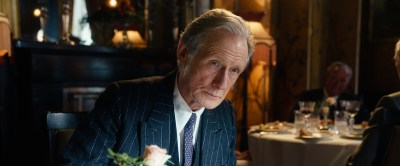
England, Wales, and Northern Ireland have abolished this law. It’s been deemed unconstitutional in Canada, as breaching the principles of fundamental justice. Yet the United States still has it—at the federal level and in most states—and no other country relies on it more. Hawai`i, Michigan, and Kentucky are the only states to have abolished it. A few states are pulling back, but others still may impose the death penalty for it. And still others are trying to expand its scope.
Most Americans are unaware of this law, despite its draconian legal consequences. That includes most of the people charged under it.
As a writer of mystery and crime fiction, I see considerable opportunities for drama inherent in the “felony murder rule,” which punishes people for killings they didn’t actually commit. When a murder occurs during the commission of certain crimes (possibly kidnapping, robbery, rape, arson), not only are the main perpetrators held responsible, but also their accomplices, co-conspirators, or marginal participants. They can be convicted of murder, even if there was no intent to harm any victims.
In a recent New Yorker article, award-winning university professor, journalist, and MacArthur Fellow Sarah Stillman compiled a review of how a law like this can go wrong. Her article on felony murder garnered her a 2024 Pulitzer Prize for Explanatory Reporting and is well worth a read in its entirety to unpack some of the complications and nuance.
Although you can imagine scenarios where more than one person is culpable in a murder case, Stillman provides some telling examples of when it hasn’t worked that way:
- In Florida, Sadik Baxter was searching parked cars for cash, caught, handcuffed, and placed in a police car. His friend driving their car fled the scene, chased by the police. When he lost control, he killed two bicyclists. Both men were charged with felony murder. Read more here. Twelve years later, Sadik’s life sentence without parole is still under appeal.
- Two men trying to steal copper wire from a Tulsa-area radio station tower electrocuted themselves. One died. Recovering from his burns in a hospital, the other man was charged with first-degree murder, as was the dead man’s girlfriend who was their driver.
- Three teenage girls in Tennessee overdosed on fentanyl before their high school graduation ceremony; two died, the third was charged with murder.
- Five Alabama youths were breaking into unoccupied houses; the police arrived, and one of the boys who had a gun was shot and killed by an officer. Three of the other boys pled down the felony murder charge, but LaKeith Smith insisted on a trial. His sentence was 65 years, reduced to 55, and most recently reduced to 30 years. Read more here.
- Two young Minneapolis women are serving time after a man they had just met killed a drug dealer. They may be eligible for release after the Minnesota legislature last November revised its felony murder law retroactively to consider intent. Fully one-third of Minnesota prisoners serving time for murder had felony murder convictions. Read more here.
While authorities hope the felony murder rule will deter inherently dangerous crimes from occurring, given that most people don’t even know about it, its deterrent effect is questionable. Victims’ families themselves have protested the law’s unfair application. But prosecutors like it because, threatened with a first-degree murder conviction, those accused often plead guilty to a lesser charge or agree to testify against their confederates.
The full scope of the law’s impact is unknown, but unpublished state-level data suggest there have been more than 10,000 felony murder convictions nationwide.











